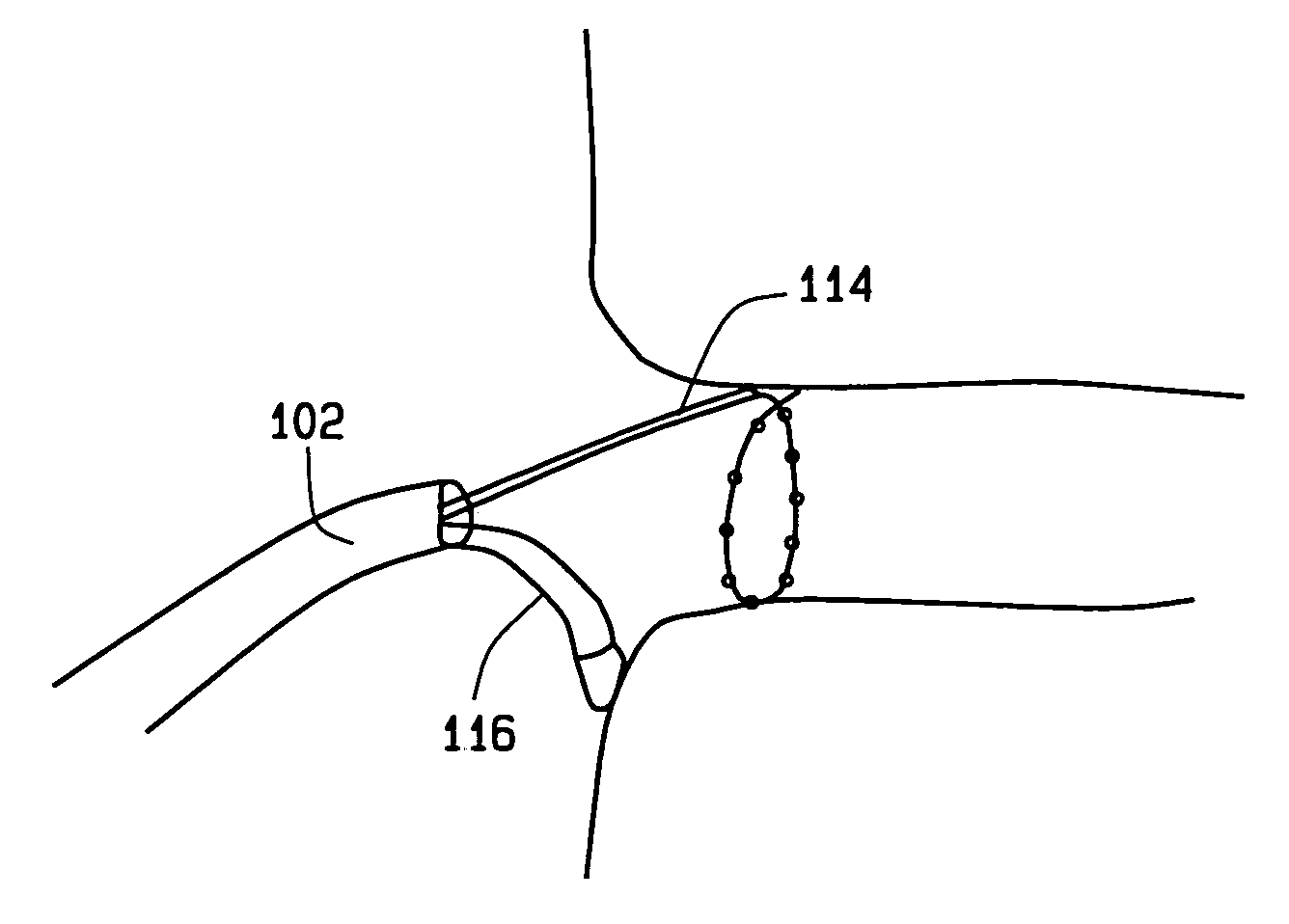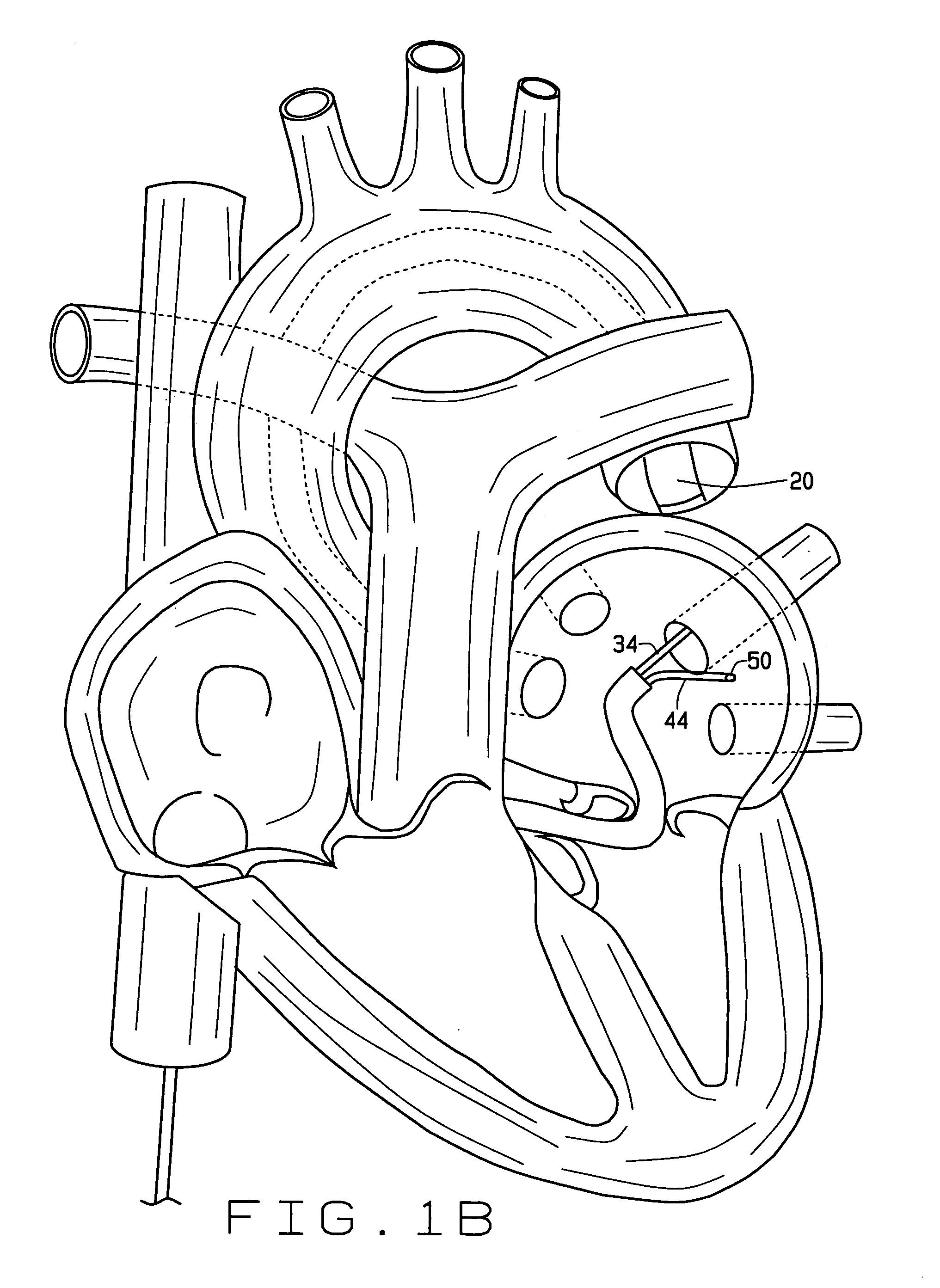Magnetically assisted pulmonary vein isolation
- Summary
- Abstract
- Description
- Claims
- Application Information
AI Technical Summary
Benefits of technology
Problems solved by technology
Method used
Image
Examples
first embodiment
[0040]a system for ablative tissue isolation constructed according to the principles of this invention is indicated generally as 20 in FIG. 2. As shown and described in this preferred embodiment, the system 20 is adapted for pulmonary vein isolation, although this invention is not limited to that procedure. As illustrated in FIG. 1 the approach can be transseptally, or as illustrated in FIG. 1A the approach can be retrograde / aortic retrograde.
[0041]The system 20 comprises a catheter 22 having a proximal end 24 and a distal end 26. At least one lumen extends through the catheter. In this preferred embodiment there are preferably two lumens 28 and 30. A magnetic member 32 is preferably disposed at or adjacent to the distal end 26 of the catheter 22. The magnetic member 32 can be a permanent magnetic material, such as Neodymium-Iron-Boron, or a permeable magnetic material such as HIPERCO. The magnetic member preferably allows the distal end 26 of the catheter 22 to be oriented with a m...
PUM
 Login to View More
Login to View More Abstract
Description
Claims
Application Information
 Login to View More
Login to View More - R&D
- Intellectual Property
- Life Sciences
- Materials
- Tech Scout
- Unparalleled Data Quality
- Higher Quality Content
- 60% Fewer Hallucinations
Browse by: Latest US Patents, China's latest patents, Technical Efficacy Thesaurus, Application Domain, Technology Topic, Popular Technical Reports.
© 2025 PatSnap. All rights reserved.Legal|Privacy policy|Modern Slavery Act Transparency Statement|Sitemap|About US| Contact US: help@patsnap.com



